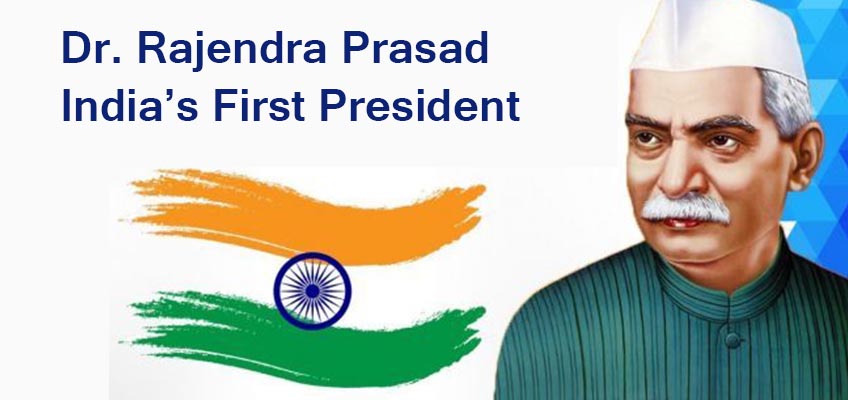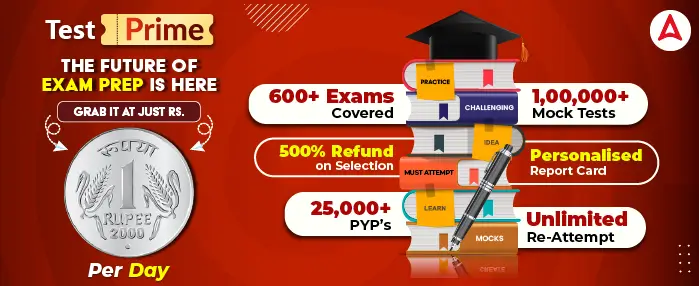India became a free and independent country in 1947, and later in 1950, it became a republic with its own Constitution. At that time, the country needed a strong and wise leader to take the top position of President. This person would become the first President of India and play an important role in guiding the nation during its early years as a republic.
Who is President of India?
The President of India is the head of the state and the ceremonial head of the country of the Indian Government, acts on the advice of the Prime Minister. The president is the head of the state but does not exercise executive powers. All the executive decisions are taken in the name of President of India. All the MoU signed with any foreign country are on the name of the President of India.
Key Details of Dr. Rajendra Prasad
- Birth date: 3rd December 1884
- Birth place: Ziradei, Bengal Presidency, British India
- Death: 28th February 1963 at Patna, Bihar, India
Early Life and Education of Dr. Rajendra Prasad
Dr. Rajendra Prasad was born on December 3, 1884, in Ziradevi village, Siwan district, Bihar. His father, Mahadev Sahai, was well-versed in Sanskrit and Persian, and his mother, Kamleshwari Devi, was a religious woman. He grew up in a family that respected knowledge.
He went to Chapra District School and later joined T.K. Ghosh’s Academy in Patna. After marrying Rajavanshi Devi in 1886, he moved to Calcutta for higher education. There, he studied at Presidency College and earned a master’s degree in economics with a first division from the University of Calcutta. He was very bright and also studied law at Allahabad University.
Involvement in Freedom Movement
Dr. Rajendra Prasad joined the Indian National Congress in 1911. After meeting Mahatma Gandhi in 1916, he became deeply influenced by his ideals. He joined movements like the Champaran Satyagraha, Non-Cooperation Movement and Salt Satyagraha. He left his job as a lawyer to support the cause of freedom.
He also supported the idea of Indian education and asked his son to leave English schooling to join Bihar Vidyapeeth. He wrote for journals like Searchlight and Desh, and used writing to spread the message of freedom.
Role in the Indian National Congress
In 1937, Dr. Prasad became President of the Indian National Congress after Subhash Chandra Bose resigned. He played a key role in the Quit India Movement in 1942 and was later jailed for three years. In 1946, he became the President of the Constituent Assembly, which wrote India’s Constitution.
Later, he was also appointed as the Minister of Food and Agriculture and promoted the slogan “Grow More Food” to improve food production in India.
Dr. Rajendra Prasad as First President of India
Dr. Rajendra Prasad, India’s first President, assumed office of President of India on 26th January 1950. He was a great leader who played a significant role in India’s fight for freedom from British rule. He served the nation as President of India for consecutive 12 years from 1950- 1962. As President, he worked to bring people together and build a strong and united country. He showed honestly, humility and dedication in serving the nation, leaving a lasting example of leadership and integrity. His time as President set a strong foundation for India’s democracy and progress.
Awards presented to Dr. Rajendra Prasad
Dr. Rajendra Prasad received several awards and honors for his contributions to the nation and society. These are as follows:
- Bharat Ratna in 1962
- Padma Vibhushan in 1957
- Doctorate of Law
- Nishan-e-Pakistan
Institutions named after First President of India: Dr. Rajendra Prasad
Some of the main institutions named after Dr. Rajendra Prasad are as follows:
- Rajendra Prasad Central Agriculture University
- Rajendra Institute of Medical Sciences
- Rajendra Prasad Institute of Communication and Management
- Rajendra Prasad College
Powers and Functions of President of India
Here are the powers and functions of the President of India
Executive Powers:
- Establishes rules for official documents and administration (Article 77).
- Appoints the Prime Minister, ministers, Attorney General, and key officials (Article 75).
- Requests information from the Prime Minister and initiates investigations (Article 78).
- Appoints administrators for Union Territories and declares scheduled or tribal areas (Article 239, 244).
Judicial Powers:
- Appoints Chief Justice and judges of Supreme and High Courts.
- Consults Supreme Court for advice (Article 143).
- Grants clemency, including pardons, reprieves, and commutations (Article 72).
Legislative Powers:
- Summons, prorogues, and dissolves the Lok Sabha; presides over joint sittings (Article 87, 86, 93).
- Nominates 12 Rajya Sabha members and decides on disqualifications (Article 80, 103).
- Provides prior recommendation for introducing money bills and promulgates ordinances (Article 117, 123).
Financial Powers:
- Recommends introduction of money bills and annual financial statement (Article 110).
- Approves demands for grants and advances from the contingency fund (Article 113, 267).
- Constitutes Finance Commission for revenue distribution (Article 280).
Diplomatic Powers:
- Negotiates international treaties subject to Parliament approval (Article 253).
- Represents India in international forums and manages diplomatic relations.
Military Powers:
- Serves as supreme commander of defense forces and appoints military chiefs (Article 53(2)).
- Can declare war or conclude peace with Parliament approval.
Emergency Powers:
- Declares National Emergency (Article 352).
- Imposes President’s Rule (Article 356 & 365).
- Declares Financial Emergency (Article 360).



 Weekly One Liners 15th to 21st of Decemb...
Weekly One Liners 15th to 21st of Decemb...
 World Basketball Day 2025 Celebrates Bas...
World Basketball Day 2025 Celebrates Bas...
 UN Celebrates Second World Meditation Da...
UN Celebrates Second World Meditation Da...







